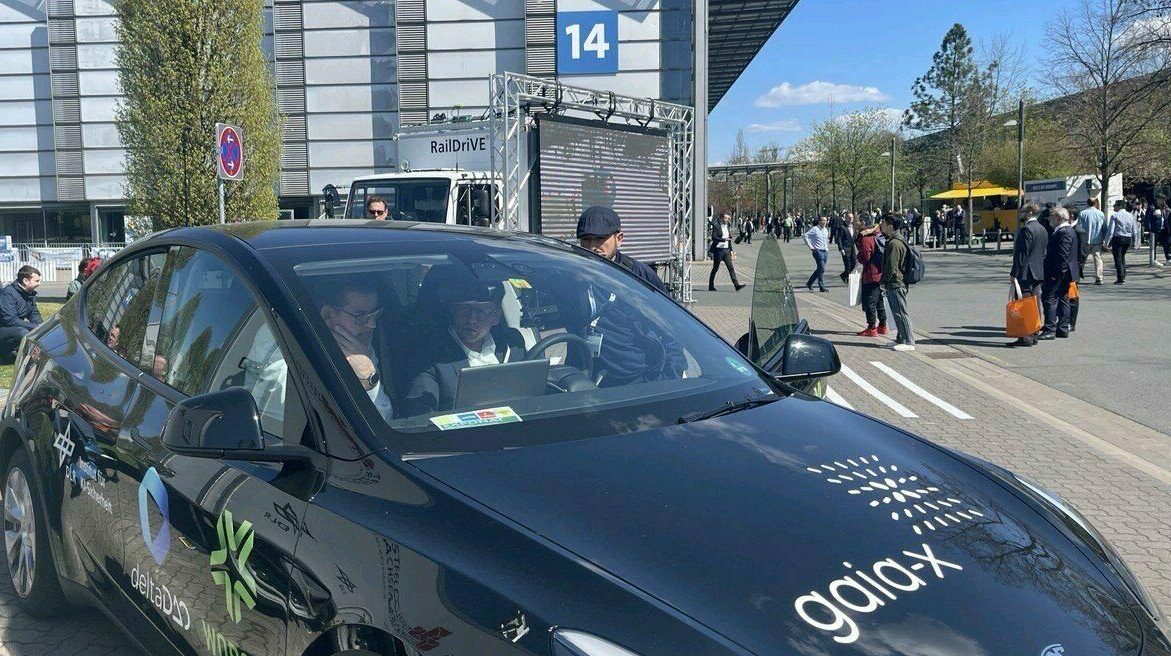We are ready for the future of mobility, industry and cloud through Gaia-X with decentralization with common guidelines.
In Hanover, we will showcase solutions for the mass deployment of automated vehicles, which are only conceivable if the cars can communicate quickly and reliably with their environment.
GAIA-X 4 future Mobility moveID
Project “Gaia-X 4 moveID”: Finding the charging station or parking space faster
GAIA-X 4 moveID project develops basis for secure mobile data exchange. It is still a dream of the future that the car itself will know where its next charging station is. To ensure that this information is available, the Gaia-X 4 moveID project is developing a standard for communication between vehicles and their environment.

Application example in Wolfsburg: networked parking.
Especially in autonomous driving, providers can link services such as news, entertainment, navigation and much more with the car’s system. The market for connected parking services alone is estimated at ten billion euros per year worldwide. In addition, targeting parking spaces is an important contribution to reducing traffic and emissions – the search for a parking space today accounts for around one-third of inner-city traffic.Gaia-X: Decentralization with common guidelineswolfsburg.digital
Today, an integrated and transparent system architecture for data exchange in road traffic that includes various products and players simply doesn’t exist.While some companies already offer services, these are tailored to specific applications, vehicles or customer groups. The data exchange required for this enables climate-friendly traffic control based on the respective traffic volume. The availability of information is also a decisive factor for the success of electromobility. It is estimated that by 2030, about half of newly registered cars in Europe will be electric. Their drivers need to know that they can quickly find a charging station when needed.
Tellus – Cross-domain federation and networking for critical applications
Tellus, the Gaia-X development project led by Internet exchange operator DE-CIX, has successfully completed the definition of the technical architecture for the use cases at hand.

In Hannover we showed for the first time our Technische Architektur. The Tellus architecture is designed to enable networking across different cloud services and data sources all the way to the end user.
Application example in Wolfsburg: networked parking. Tellus, the Gaia-X development project led by the Internet Exchange operator DE-CIX, has successfully completed the definition of the technical architecture for the use cases at hand.
The goal of the Tellus project is to develop and deploy a Gaia-X-compliant network infrastructure for sensitive use cases that leverages existing Internet infrastructure and adds a software layer. A usable prototype for this software-based networking should be available by the end of 2024.
Pontus-X Portal: https://v4.minimal-gaia-x.eu/ Vehicle Data Collection Service Offering: https://v4.minimal-gaia-x.eu/asset/did:op:2e148b5c1ff12590c13bc018100743f0253f22f49cbaf7876612b2417f961789 Federated Learning and Analytics Service: https://fa.mobility.demo.delta-dao.com/ OVAL Platform: https://dev.oval.pepro.io/ moveID Portal: https://portal.moveid.eu/ moveID Blog: https://moveid.org/ Exchange Logging Service: https://explorer.genx.minimal-gaia-x.eu/ Compute-to-Edge Video: https://youtu.be/lGHFP3dG9yo
